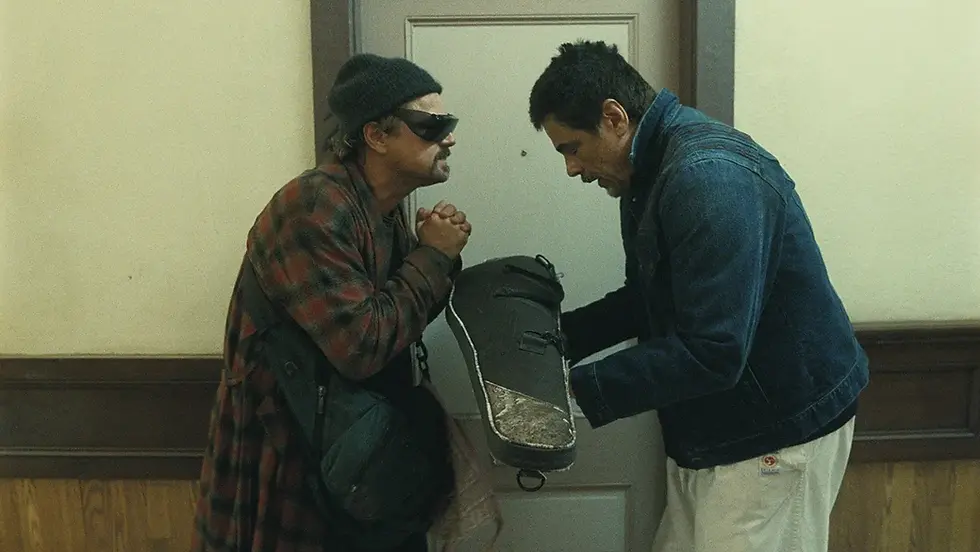Underworld Initiation in Our Age
- Norland Tellez, PhD

- May 20, 2019
- 4 min read
Updated: Jun 6

Looking at my life, I cannot escape a basic fact: my individual existence is enmeshed in the life of the collective—not only my immediate family and friends, but in the larger institutions and systems that give meaning to my existence as a citizen of the United States.
Attempting to trace one's own “pathway to bliss,” therefore, cannot be a self-centered undertaking. Every decision and risk I take affects the collective of which I am a part. Therefore, an authentic pathway to bliss can never be solely a question of “personal responsibility,” as it has to do with the larger responsibility that the personal bears to the collective. The power of myth works like a “secret opening through which the inexhaustible energies of the cosmos pour into human cultural manifestation” ,and the collective nature of this act is often taken for granted (Campbell, The Hero with a Thousand Faces, 3). That being said, we turn to the issue of archetypes, which are contents of the collective unconscious. Carl Jung writes that an archetype “stirs us because it summons a voice that is stronger than our own,” and “[w]hoever speaks in primordial images speaks with a thousand voices” as the power of myth “transmutes [our] personal destiny into the destiny of mankind” (Jung, The Spirit in Man, Art, & Literature, 75 | CW15: 82¶129). Both Campbell and Jung ultimately end up stressing the collectivity and universality of the psyche that lives within each individual, although for the most part, unconsciously.
It is interesting to note that when Campbell came across psychologist Abraham Maslow’s list of “secular” values (“survival, security, personal relationships, prestige, and self-development”), he was struck at once by the fact that these are “the values for which people live when they have nothing to live for” (Pathways to Bliss: Mythology and Personal Transformation, 86). Unbridled individualism, far from being a road to “higher consciousness,” is a regressive path into the selfishness of nature. In things like survivalism, personalism, and selfish self-development, Campbell discerns precisely the type of values “that a mythically inspired person doesn't live for, because these are exactly the values that mythology transcends” (Pathways to Bliss, 87). Mythology transcends these values simply because of the fact that it is a product of the collective mind working through individuals.
As individuals participate in the collective substance of myth, there is not only individual development but a development of the universal self; the power of myth is the power to transmute personal or private experiences into historic events with collective significance. In the last analysis, this unfolding of mythic consciousness expresses the life of the collective spirit which constitutes a people, a nation, or even a species.
As an individual gets caught in the archetypal powers of the collective, consciousness must submit to the rites and symbols of initiation to make sense of this new reality. The fundamental significance of the rites and symbols of initiation has little to do with egocentric self-development, and instead “introduces the candidate into the human community and into the world of spiritual and cultural values” (Eliade, Rites and Symbols of Initiation, x).
As individuals are “decentered” from their conscious, ego-driven idea of themselves, they are initiated into a larger context of cultural creation that affects the entire organization of human life. Initiation is a passionate engagement with our collective destiny, accepting the gifts and responsibilities that come from being a grown-up member of society. Initiation means leaving the state of apolitical innocence that characterizes the child, and orienting its consciousness to the universal dimensions of cultural life in the arena of the polis (city-state).
Accordingly, it is characteristic of this stage of the journey that it should appear as a descensus ad inferos (“descent into Hell”) wherein we must confront archetypes of the “death-drive” (thanatos) at the root of the psyche. Both in puberty rites of initiation and shamanic forms of dismemberment, the hero experiences the sacrificial logic of the self in the underworld. As consciousness is submerged into the chaotic substance of the collective psyche, the “wholeness” of the ego is torn to pieces as its false myths are deconstructed on the sacrificial altar of the universal self.
As Campbell describes the second act of the Hero’s Journey, initiation is where “[t]he most difficult stages of the adventure now begin, when the depths of the underworld with their remarkable manifestations open before him. . .” (The Hero with a Thousand Faces, 91). The opening of the underworld pulls our consciousness down into the dark roots of our collective history and its mythic depths, where a deep sense of belonging emerges as a consequence of the descent. An initiation into the psychic realms of memory and forgetfulness, historic notions and long-lost ancestral shades, it is where we must give the blood of sacrifice that makes the dead speak again.
The initiatory journey is certainly not one for the faint of heart; for rather than receiving encouragement or “positive vibes,” we are met with the signs of absolute negativity—the spectral afterlife of psychic inexistence—characterizing the collective psyche in its underworldly aspect. Taking us beyond our instincts for self-preservation, initiation into the depths moves our consciousness toward the knowledge (gnosis) of being itself, in the integration of existence with nonexistence, the conscious mind with the unconscious process. Therefore, it requires a full intellectual engagement with the “crazy” logic of the psyche—its negative and self-contradictory psycho-logic—as the spiritual life of the world soul in time.

%20BB.png)


